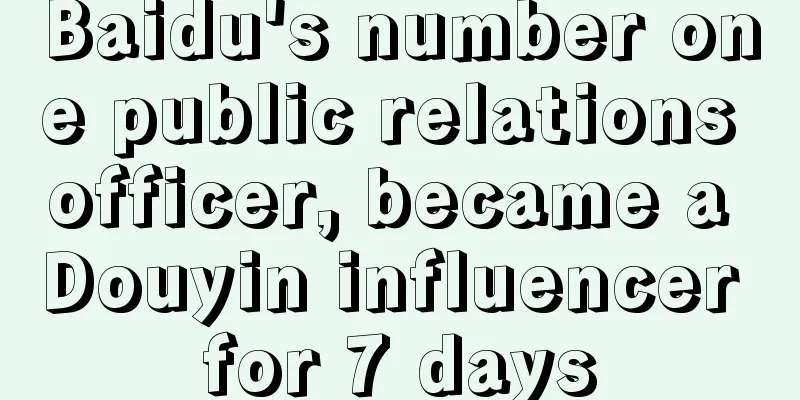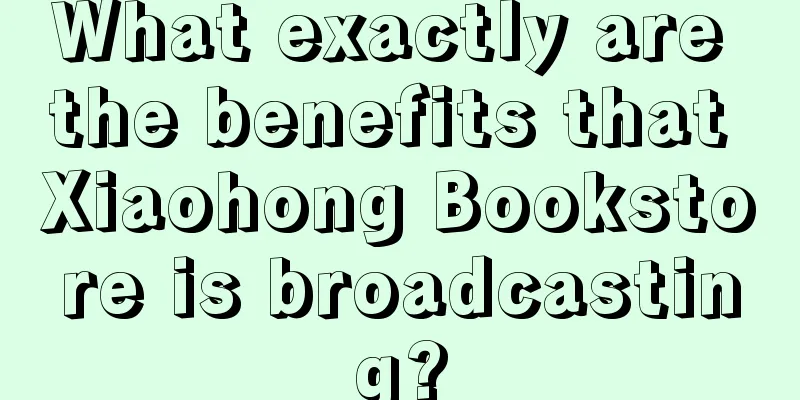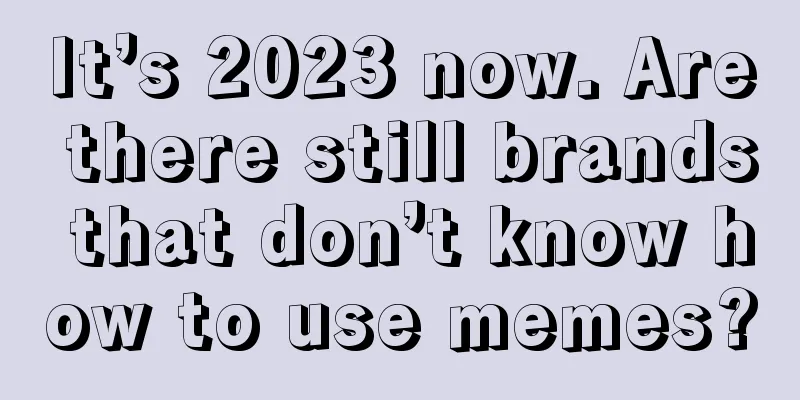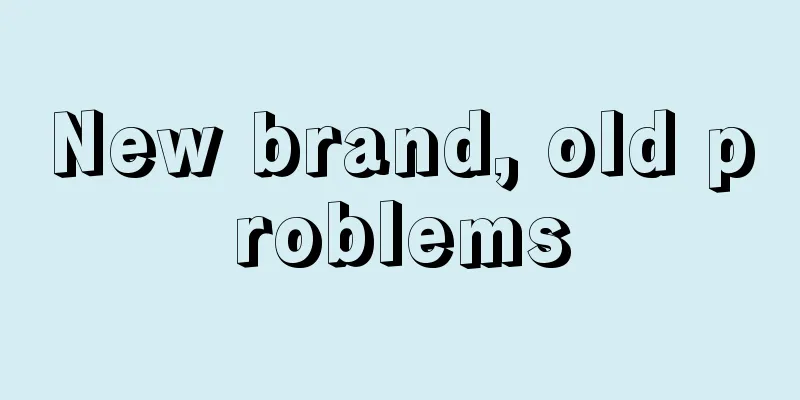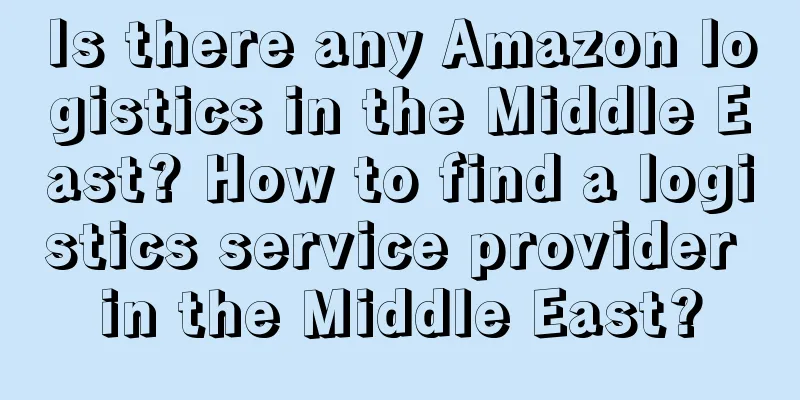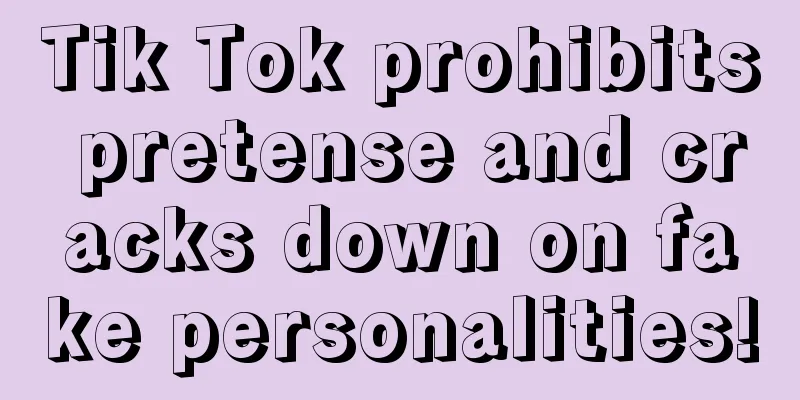Beverage brand Liquid Death relies on "funeral style" to capture hardcore fans?

Recently, the beverage brand Liquid Death cooperated with Yeti to launch an eye-catching product, a life-size "coffin freezer", and adopted "murder your thirst" as its slogan. This marketing method that combines excitement and controversy stands out in the market. This unique marketing method received positive feedback on Liquid Death's official Twitter account, and even increased the stickiness and praise of its own brand fans. Some users expressed their acceptance and love for this new product in humorous and even funny language. “It’s a legend” “This is amazing” "I still have to try Liquid Death!" "A life without sick jokes is not worth living." 1. Liquid Death has long been playing with the topic of deathIn fact, in addition to the above case, Liquid Death has been relying on the topic of death to attract consumers' recognition. Why would a brand choose such a "different" design concept? And how did it achieve outstanding achievements on this road? Morketing will conduct an in-depth analysis to reveal the answer behind it. Why did Liquid Death choose funeral style? The answer is closely related to the story of the brand's founder. Mike Cessario, the founder of Liquid Death, has an impressive career. He has served as the creative director of Netflix and is also the marketing expert behind hit American TV series such as "House of Cards" and "Stranger Things". It is worth mentioning that Cessario is also a rock singer who understands design. Cessario, who has been in the rock music scene for a long time, found that drinking in traditional bars is harmful to the body, and drinking water alone is not cool enough. In the passionate party atmosphere, ordinary mineral water is out of place. It is based on consumers' "social needs" and the improvement of anti-alcohol awareness that Cessario came up with the idea of creating a brand that is both distinctive and healthy: Why are those cool marketing always linked to junk food? Why can't healthy drinks be fun, trendy and rebellious, and then integrated into the daily lives of young people? With this in mind, Liquid Death, which plays with the topic of death, came into being. So, how does Liquid Death make good use of "death"? “Liquid Death is not just a canned water brand, it’s an entertainment company,” Cessario said. The first is the differentiated positioning of the product. Different from the cheerful image of traditional beverage marketing, Liquid Death avoids the mainstream market with its unique death style and focuses on niche channels such as concerts and tattoo shops, which quickly attracted rock fans and subculture groups. This unconventional and interesting positioning has made the brand quickly popular among young people. We can see that Liquid Death's marketing methods are bold and direct, such as hiring adult movie stars in environmental protection campaigns and launching creative products such as "Killer Baby Namer", which not only reflects the brand characteristics, but also establishes a deep emotional connection with consumers. However, although Liquid Death's marketing methods are completely different from traditional brands, the brand still adheres to positive values and social responsibility, advocating health and environmental protection. For every can of product sold, 5 cents will be donated to marine pollution control. This unconventional marketing method has expanded Liquid Death's fan base. Cessario revealed in an interview with CNBC that he initially thought it was just a niche brand targeting punk circles and subculture groups, but he never expected that its audience would be so wide, from young people who like the brand's cool name and design to social people who care about environmental protection. Secondly, the same style of derivative peripherals are sold simultaneously. Liquid Death extends the brand tone to derivative products with the same style, launching blind boxes and peripheral products, adding to the brand's mystery. In terms of advertising and promotion, the brand has spent more than 90% of its performance advertising budget on peripheral product stores, selling limited products such as water bottles and T-shirts. At present, this strategy has achieved remarkable results, with peripheral sales revenue reaching millions of dollars, accounting for 10% of total revenue, and the number of SKUs of peripheral products far exceeds that of beverage products. In addition, Liquid Death combined NFT blind boxes with celebrity effects to build a new marketing combination in the form of UGC on social media. When the NFT market was hot, Liquid Death issued NFT blind boxes and invited well-known Hollywood actors to shoot TVCs, which attracted enthusiastic pursuit from young people through the "sell your soul" campaign. On TikTok, a large amount of user-generated content (UGC) discussed the brand, and some even discussed whether soul trading was legal based on the US Constitution. Liquid Death successfully stood out in the fiercely competitive market through continuous innovation and differentiated positioning. 2. A new brand perspective: How to handle the topic of deathAfter decoding how Liquid Death cultivated a loyal customer base by using death-themed strategies, we can also think about how other brands can learn from the use of death elements. Specifically, we might as well start with the following three points: 1. Node entry: accurately capture emotional resonance points First, choose a specific node that matches the brand tone for promotion, which may stimulate unexpected benefits for the brand. For example, the Qingming Festival, a traditional Chinese festival, is undoubtedly a golden moment full of emotional resonance. Not long ago, Wen Xian chose to launch a co-branded incense product called "Ceramic Incense Burner - Snail" together with Gui Cong, a professional funeral supplies brand, during the Qingming Festival, a festival that carries the remembrance of ancestors but subtly avoids facing sadness. Through the cooperation with Gui Cong, Wenxian not only provides a novel fragrance product, but also creates a platform for people to express their thoughts during special holidays. It also breaks the traditional taboos and injects new perspectives and power into the discussion of life issues. 2. Personification: Diluting the Seriousness of Death Secondly, the product can be personified, giving the abstract concept or product human characteristics. If the brand can skillfully integrate this element into marketing activities, it can often create a unique market effect. For example, KFC once held a funeral for its old French fries. Due to its direct comparison with McDonald's next door, KFC's old French fries have repeatedly become a negative example for the industry to reflect on. However, when it was caught in a product controversy, KFC did not choose to withdraw quietly, but resolved it in an unprecedented way - holding a funeral for the old French fries. In this event, KFC put a coffin full of French fries into a coffin printed with the brand logo, and the hearse paraded through the busy streets of Toronto. This move quickly attracted widespread public attention and heated discussions, becoming a hot topic on social media. This marketing strategy of KFC not only cleverly put an end to the old French fries, but also paved the way for the successful launch of the new French fries. 3. Scenario-based Marketing: “One-stop” Service Finally, you can cleverly talk about the "funeral" element and integrate this topic into the scene to trigger emotional resonance among consumers. Take the "Ferryman" coffee shop as an example. This "life experience store" that combines life philosophy with coffee art interweaves funeral services with coffee culture, creating a unique communication space for customers where they can talk about their feelings about life and death. Inside the coffee shop, the coffee latte art is decorated with the word "甸", and funeral supplies such as shrouds, urns, and coffins are displayed in a peaceful and respectful manner, quietly communicating the end of life and immortality. It is worth mentioning that this coffee shop is also an institution that provides a full range of funeral services, allowing customers to receive professional consultation and support on funeral services, and the entire experience is complete and profound. This unique marketing method not only breaks the inherent taboo of death, but also deeply reveals the true meaning of the "death" strategy. It allows customers to immerse themselves in every detail of funeral services while enjoying the aroma of coffee, and gain a deeper and more delicate understanding of life and death. Through this "one-stop" service marketing model, the brand has successfully crossed the boundary between consumption and funeral services, bringing consumers an unprecedented life experience and emotional connection. 3. Market Echo: Consumer Insights on the Topic of DeathConsumer feedback plays a key role in the value assessment of brand marketing. Below, we explore the value thinking behind "death" and "funeral" from the perspective of consumers. Social reflections on the topic of death When we discuss the value of marketing, we usually talk about some conversion and dissemination data, but many people forget the textbook definition of marketing: "Marketing is a social process in which individuals and groups get what they want by creating, providing and freely exchanging valuable products and services with others." Regardless of sales volume, as long as this campaign brings thinking value to the public, it is a meaningful campaign. In fact, we can measure the social value of marketing through consumer feedback. Just like the "Ferryman" Death Cafe mentioned above, the combination of brand and funeral aesthetics has aroused emotional resonance among consumers. Morketing compiled some comments from netizens on "Ferryman": "How should I put it? I can imagine that most people would refuse. After reading his story, I actually quite understand and comprehend the purpose and significance of their opening this store. This may be the darkest time I have ever experienced. If I have the chance, I must go to Shanghai." "It's very meaningful. Even if it means going to the ground, it's very meaningful. After all, Chinese people don't like to talk about life and death, but this is the most important topic in life, and we shouldn't be shy about it." Controversy is inevitable Although the use of death topics is novel and interesting, improper use may also cause controversy. For example, when LV built a hotel on the Champs-Elysées, it used old-fashioned hardbox paint as the hotel enclosure. Its shape and "iron wall" style reminded people of a coffin, causing discomfort. After all, "death" and "funeral" still have a natural conflict with mainstream traditional values and aesthetics. When people face sensitive topics, they often activate psychological defense mechanisms to protect their emotions from being hurt. If products that use the topic of "death" touch the psychological bottom line of consumers, it will cause strong discomfort in their hearts, and then pose a potential trust crisis to the brand's reputation. Consumers’ personal values and beliefs are also important factors that influence their attitudes toward death topics. For consumers who adhere to specific religious beliefs or values, using death topics may be seen as blasphemy against their beliefs, thus triggering strong resistance. IV. ConclusionBrands incorporating the element of "death" into product marketing is far from a simple commercial gimmick or hype. It is actually a deep analysis of life, death and human emotions, and an attempt to guide society to change its taboo mentality towards death. This marketing strategy can win unique attention and emotional resonance for the brand, thereby enhancing the brand's influence. However, if it is not handled properly, it may also trigger consumer discomfort and disgust, causing damage to the brand image. Therefore, when adopting this strategy, brands must carefully consider its pros and cons. Click on the mini program to sign up for the 9th Lingmou Awards ▽ Text | Cash The title image is from Unsplash, based on the CC0 protocol. |
>>: Latest announcement: WeChat Mini Store begins upgrading to WeChat Mini Store
Recommend
How to optimize Shopee products? What are the techniques?
In fact, everyone is familiar with Shopee. There a...
What does Amazon KYC mean? Will Amazon send email notifications for KYC audits?
KYC is a procedure used to verify the identity of ...
The poor want to take advantage of others, but some people want to take advantage of the poor.
This article deeply analyzes the development statu...
If you want to make money in your private domain, you must post good Moments
How to make money from private domain traffic? Wha...
Creating a hot-selling product: creating a trend or chasing a trend
For companies that sell products, a hit product me...
The "Creator Profit Plan" of Video Account has been officially launched. Is this the opportunity for creators?
Introduction: As a rising star in the short video ...
Live e-commerce "kills" 618
Under the general trend of the integration of cont...
The copywriting of BOSS Zhipin has a Dong Yuhui flavor
This article mainly analyzes the advertising copyw...
How to get the URL address of Amazon images? How to save images?
On the Amazon shopping platform, sometimes we need...
What is the difference between Amazon’s own sales and third-party sales? What are the direct mail techniques?
Now many friends will open stores on Amazon. When ...
With private domain revenue exceeding 100 million yuan and a repurchase rate of nearly 40%, how does LemonBox, the No. 1 in its niche category, achieve growth through private domain?
Private domain marketing continuously follows up a...
Where is the entrance to Lazada live streaming? How to activate it?
There are many domestic users on the Lazada platfo...
Our Xiaohongshu operation is resigning and starting a business
Nowadays, more and more people choose to join Xiao...
Is it easy to place orders on Shopee's Taiwan site? Which products place orders quickly?
If you want to open a store on Shopee, you must ch...
Can I use Bank of China to pay for items purchased on Amazon Japan? How can I pay?
Amazon Japan now has a direct mail service to Chin...


